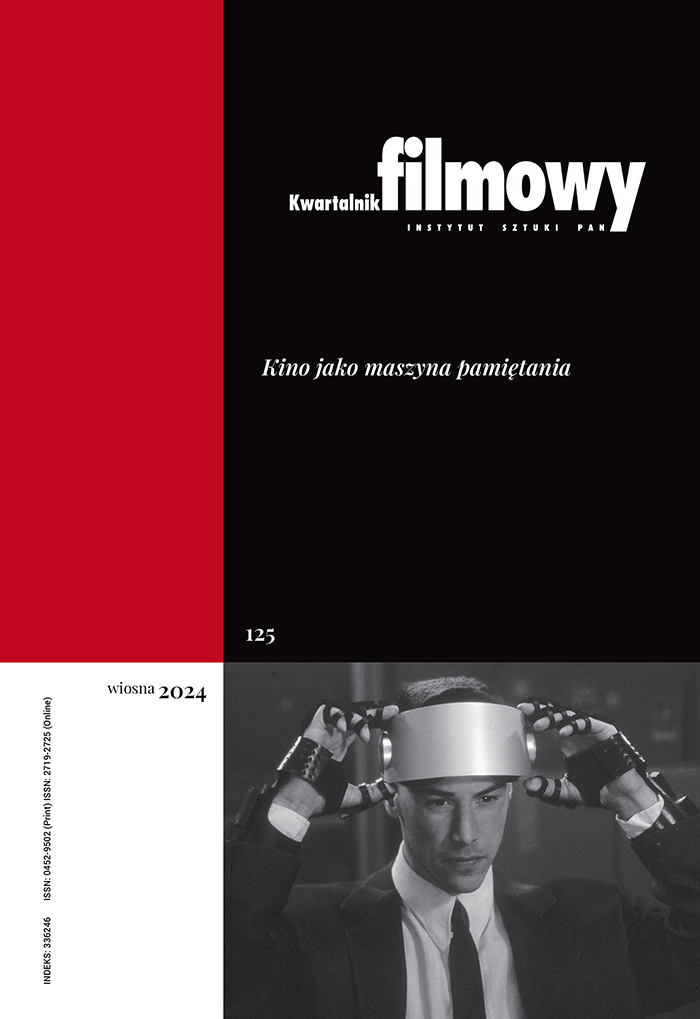Tamara Sorbian-Kasprzycka, 1952-2020. In Memoriam
Marcin Giżycki
mgizycki@hotmail.comPolish-Japanese Academy of Information Technology (Poland)
https://orcid.org/0000-0001-7525-0205
Abstract
This is a tribute to Tamara Sorbian-Kasprzycka, a well-known Polish animator who died in January 2020. She studied psychology and art history in Poznań, and attended Mirosław Kijowicz’s course in animation at the Film School in Lodz. She made a number of visually striking films, mostly inspired by well-known painters. She was working on a feature film about the last day of life of Bruno Schulz. (Non-reviewed material).
Keywords:
Tamara Sorbian-Kasprzycka, animator, video artReferences
Giżycki, M. (1981). Jak powstał znak „Solidarności” (rozmowa z gdańskimi plastykami – Krystyną i Jerzym Janiszewskimi oraz Anną i Tadeuszem Strzelczykami). Literatura, (2), s. 5.
Google Scholar
Authors
Marcin Giżyckimgizycki@hotmail.com
Polish-Japanese Academy of Information Technology Poland
https://orcid.org/0000-0001-7525-0205
Film and art historian, critic, filmmaker. Professor at the Polish-Japanese Academy of Information Technology in Warsaw (Poland). Senior Lecturer at Rhode Island School of Design in Providence (USA). Artistic Director of “Animator” – International Animated Film Festival in Poznań (Poland). Former editor-in-chief of Animafilm – the ASIFA quarterly. He has published eight books and around 400 articles on film and art in Polish and foreign publications. He has also made a number of documentary, live action, experimental, and animated films in Poland and the USA. In 2016 he received the Award for the Outstanding Contribution to Animation Studies at “Animafest”, the World Festival of Animated Film in Zagreb (Croatia).
Statistics
Abstract views: 1221PDF downloads: 277
License
Copyright (c) 2020 Marcin Giżycki

This work is licensed under a Creative Commons Attribution-NonCommercial-NoDerivatives 4.0 International License.
The author grants the publisher a royalty-free non-exclusive licence (CC BY 4.0) to use the article in Kwartalnik Filmowy, retains full copyright, and agrees to identify the work as first having been published in Kwartalnik Filmowy should it be published or used again (download licence agreement). The journal is published under the CC BY 4.0 licence. By submitting an article, the author agrees to make it available under this licence.
In issues from 105-106 (2019) to 119 (2022) all articles were published under the CC BY-NC-ND 4.0 licence. During this period the authors granted a royalty-free non-exclusive licence (CC BY-ND 4.0) to use their article in „Kwartalnik Filmowy”, retained full copyright, and agreed to identify the work as first having been published in our journal should it be published or used again.
Most read articles by the same author(s)
- Marcin Giżycki, Smartphone – The Triumph of Eisenstein , Kwartalnik Filmowy: No. 112 (2020): Polish Documentary, Polish Animation
- Marcin Giżycki, … Only Stills Remained: Nonexistent Films of Cindy Sherman , Kwartalnik Filmowy: No. 115 (2021): Form Film, Content Film
- Marcin Giżycki, „L’âge d’or” – the Masterpiece of Provocation , Kwartalnik Filmowy: No. 109 (2020): Architectural Space in Film
- Marcin Giżycki, Why I Do Not Like Advertising in the Cinema , Kwartalnik Filmowy: No. 105-106 (2019): Cinema and Political Transformation
- Marcin Giżycki, The Last Wizard of Western World , Kwartalnik Filmowy: No. 34 (2001): Cinema at the Turn of the Century
- Marcin Giżycki, Expanded Cinema Thirty Years Later , Kwartalnik Filmowy: No. 35-36 (2001): Cinema and New Media
- Marcin Giżycki, The Revenge of Joker and Parasites , Kwartalnik Filmowy: No. 108 (2019): Film Production and Distribution
- Marcin Giżycki, Tucker and Others , Kwartalnik Filmowy: No. 110 (2020): Beyond Human Being
- Marcin Giżycki, The Highs and Lows of Animation in Bohemia , Kwartalnik Filmowy: No. 81 (2013): Child in Film
- Marcin Giżycki, The Artist in a Haunted House: Jeremy Blake and the Winchester Mystery House , Kwartalnik Filmowy: No. 97-98 (2017): Wandering Motifs











